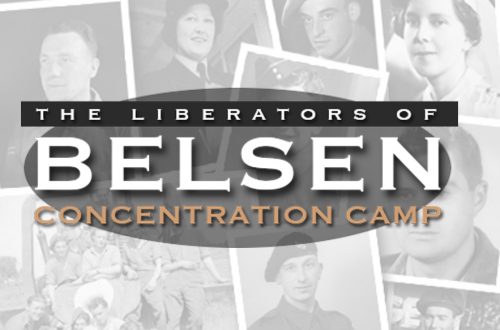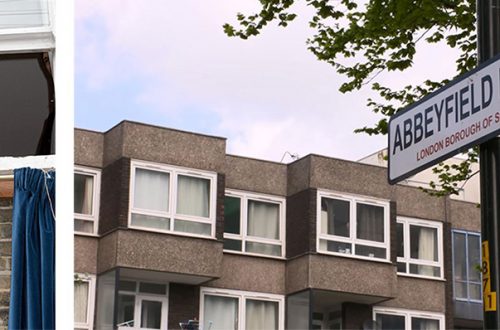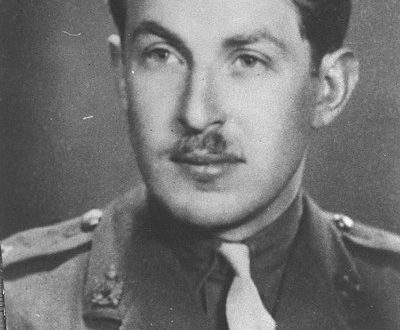Nigel A. Kinnear (Red Cross)
Prof Nigel A. Kinnear who died on July 19th was a man with many talents. He was a distinguished surgeon, a dedicated teacher who acted as a role model for a generation of young doctors and medical students, and a gifted sportsman who enjoyed life to the full with a sense of humour and a remarkable wit.
It was said of him, on his election to honorary fellowship of the Royal Academy of Medicine in Ireland in 1982, that he exhibited qualities of leadership, wisdom, skill and courage in his chosen field of vascular surgery.
Born on April 3rd 1907, he was the third of three children of a well-known Dublin accountant, James Kinnear and his wife, Margaret.
He attended Kingstown Grammar School during the first World War. He often recounted memories of assisting his mother, a member of the Red Cross, to distribute sandwiches and tea to soldiers, some of whom were suffering from war wounds, returning by the mail boat to Kingstown from the Western Front. This left a lasting impression on the young Nigel Kinnear.
He was later sent to public school in England, Mill Hill, a school noted for its emphasis on sporting excellence where he subsequently developed his love of sport and particular expertise at hockey.
He played at left half for Trinity and Three Rock Rovers and represented Leinster at inter-provincial level. He was an accomplished golfer and continued to play in Portmarnock well into his eighties. Having graduated from Trinity MB, BCh, BAO, in 1930 he was appointed to the post of house surgeon in Sir Patrick Dun’s Hospital. At that time there was only one resident doctor who was expected to be available 24-hours-a-day.
He spent a further year as resident medical officer in the General Hospital Jersey, and later went to study in a postgraduate surgical institute in Vienna in order to perfect his surgical skills before taking his FRCSI in 1934.
He was appointed consultant surgeon in the Adelaide Hospital in 1935 and served there until his retirement in 1973. During his career in the hospital, he witnessed a veritable revolution in surgery: the introduction of antibiotics, improvements in anaesthesia, and a greater ability to prevent and cure surgical shock.
In 1945 he took leave of absence to serve with the organisation Civilian Relief under the umbrella of the British Red Cross. It was at that time that he met a young transport officer serving with the Red Cross, at 3 a.m. on the docks at Ostend. She was in charge of the convoy which was to escort four Irish doctors, Kinnear, Collis, McClancy and Murphy to Belsen concentration camp who were to become the first civilian medical team to enter following its liberation.
She was in fact their commanding officer. Thus began a loving relationship, which lasted for 55 years. Frances, a war widow, had seen war service in Finland, later served throughout the Blitz in London, crossed the Atlantic in war-time convoys to arrange evacuation of children, and finally served with the Americans and Red Cross in Europe. He married his “commanding officer” two years later in her home town of Lichfield, Staffordshire. The family was complete with the birth of their daughter Fiona, of whose success nationally and internationally in equestrian circles, he was so justly proud.
On his return to the Adelaide, he was largely responsible for the modernisation of the operating theatres in 1951 and the commissioning of Ireland’s first intensive care unit in 1965.
The expertise of Nigel Kinnear became legendary in the Liberties and surrounding tenement areas of Dublin. He was known for his compassion and his particular concern. He was elected to the Council of the Royal College of Surgeons in Ireland in 1946 and served as President from 1961 to 1963. He served as President of the Royal Academy of Medicine in Ireland from 1966 to 1969. He was Regius Professor of Surgery in Trinity and an honorary fellow of the Royal College of Surgeons of Glasgow.
Following a visit to the US with his friend, the late Prof Paddy Fitzgerald of St Vincent’s Hospital, they realised that one of the greatest surgical challenges in the 20th century was vascular surgery. Until this time the only solution to gangrene was amputation. They pioneered aortic replacement and vein grafts in this country. He was ahead of his time in realising the importance of smoking cessation and exercise in controlling the problem.
He inspired his hospital staff with his exceptional surgical and clinical skill, his sense of duty, commitment to patients, and his ability to involve the most junior student as part of the team. He believed passionately in the importance of bedside teaching and allowing resident students and house staff to take responsibility, but ensuring that he was always available with advice and support. Above all, working for the professor was fun; it was important to maintain a sense of humour.
He was an accomplished shot and fisherman, a passion he shared with Frances. He had simple tastes; happiness was salmon fishing on the Slaney accompanied by his beloved wife.
Nigel Kinnear is survived by his wife, Frances, to whom he was married for 53 years and his daughter Fiona.
Prof Nigel Alexander Kinnear: born 1907; died, July 2000
17,308 total views




